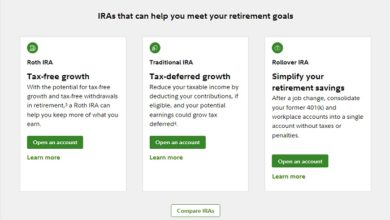
This guide provides a comprehensive overview of asset allocation for moderate risk investors, covering key concepts, strategies, and implementation steps. It emphasizes the importance of understanding individual financial goals and risk tolerance when crafting an asset allocation strategy. It also highlights the significance of ongoing monitoring and periodic rebalancing to ensure the portfolio remains aligned with the investor’s objectives.
Moderate risk investors typically seek a balance between capital appreciation and preservation. They are willing to accept a certain level of volatility in exchange for potentially higher returns over the long term. However, they also prioritize capital preservation to some extent, aiming to mitigate downside risk. Moderate risk investors often have a moderate investment horizon, typically five to ten years or more, allowing them to weather short-term market fluctuations.
Asset Classes and Their Characteristics
Before delving into asset allocation strategies, it’s essential to understand the main asset classes available to investors and their respective characteristics:
Equities (Stocks)
Equities represent ownership in a company and offer the potential for high returns over the long term. However, they also come with higher volatility and greater risk of loss, especially in the short term.
Fixed-Income Securities (Bonds)
Bonds are debt securities issued by governments, municipalities, or corporations. They provide regular interest payments and return of principal at maturity. Bonds generally offer lower returns compared to stocks but provide more stability and income.
Cash and Cash Equivalents
This category includes cash, savings accounts, money market funds, and short-term certificates of deposit (CDs). Cash equivalents offer high liquidity and capital preservation but typically yield lower returns, often struggling to keep pace with inflation.
Real Estate
Real estate investments encompass properties such as residential homes, commercial buildings, and real estate investment trusts (REITs). Real estate offers potential appreciation and income through rent but can be illiquid and subject to market cycles.
Asset Allocation Strategies for Moderate Risk Investors
Now that we’ve outlined the main asset classes, let’s explore some asset allocation strategies suitable for moderate risk investors:
Traditional Asset Allocation:
- Equities: 50%
- Fixed-Income Securities: 40%
- Cash and Cash Equivalents: 10%
This balanced approach aims to achieve growth through equities while providing stability and income through fixed-income securities and cash equivalents.
Age-Based Asset Allocation:
- Equities: (100 – investor’s age)%
- Fixed-Income Securities: Investor’s age%
As investors age, they gradually shift their allocation from equities to fixed-income securities to reduce portfolio volatility and preserve capital.
Risk-Adjusted Asset Allocation:
- Equities: 60%
- Fixed-Income Securities: 30%
- Real Estate: 10%
This strategy allocates a portion of the portfolio to real estate, offering diversification benefits and potential inflation protection while maintaining a balanced risk profile.
Tactical Asset Allocation:
- Equities: 50-70%
- Fixed-Income Securities: 20-40%
- Cash and Cash Equivalents: 0-10%
Investors actively adjust their allocation based on market conditions, valuations, and economic outlook, aiming to capitalize on opportunities and mitigate risks.
Implementing Asset Allocation: A Step-by-Step Guide
Now that we’ve discussed various asset allocation strategies, let’s outline a step-by-step guide to implementing asset allocation for moderate risk investors:
Step 1: Define Financial Goals and Risk Tolerance
Before allocating assets, it’s crucial to define your financial goals, such as retirement planning, education funding, or wealth accumulation. Additionally, assess your risk tolerance, considering factors such as investment horizon, income stability, and emotional capacity to withstand market fluctuations.
Step 2: Determine Asset Allocation Strategy
Based on your financial goals and risk tolerance, select an appropriate asset allocation strategy from the options discussed earlier. Consider factors such as expected returns, volatility, and correlation among asset classes.
Step 3: Select Specific Investments
Once you’ve determined your asset allocation strategy, select specific investments within each asset class. For equities, consider diversifying across industries, geographies, and market capitalizations. For fixed-income securities, assess bond quality, duration, and yield. For real estate, evaluate property types, geographic locations, and investment vehicles.
Step 4: Monitor and Rebalance Portfolio
Regularly monitor your portfolio’s performance and adjust asset allocation as needed to maintain your target allocation. Rebalance periodically to bring your portfolio back in line with your desired asset allocation, especially after significant market movements or changes in financial circumstances.
Step 5: Stay Informed and Seek Professional Advice
Stay informed about market developments, economic trends, and regulatory changes that may impact your investments. Consider seeking advice from financial professionals, such as financial advisors or investment managers, to ensure your asset allocation aligns with your goals and risk tolerance.
Final Thoughts
Asset allocation is a critical aspect of investment management, particularly for moderate risk investors seeking a balance between growth and stability. By understanding the characteristics of different asset classes and implementing appropriate asset allocation strategies, investors can effectively manage risk and pursue their financial objectives.
Remember to regularly review and adjust your asset allocation as needed to adapt to changing market conditions and evolving financial goals. With careful planning and disciplined execution, moderate risk investors can build resilient and diversified portfolios capable of weathering various market environments.
Photo Credit: https://www.freepik.com/free-photo/finances-elements-wooden-cubes-arrangement_11620735.htm









DISCLAIMER: The information provided on InvestmentTotal.com is for general informational purposes only. The content on this website is not intended to be, and should not be construed as, professional financial advice.